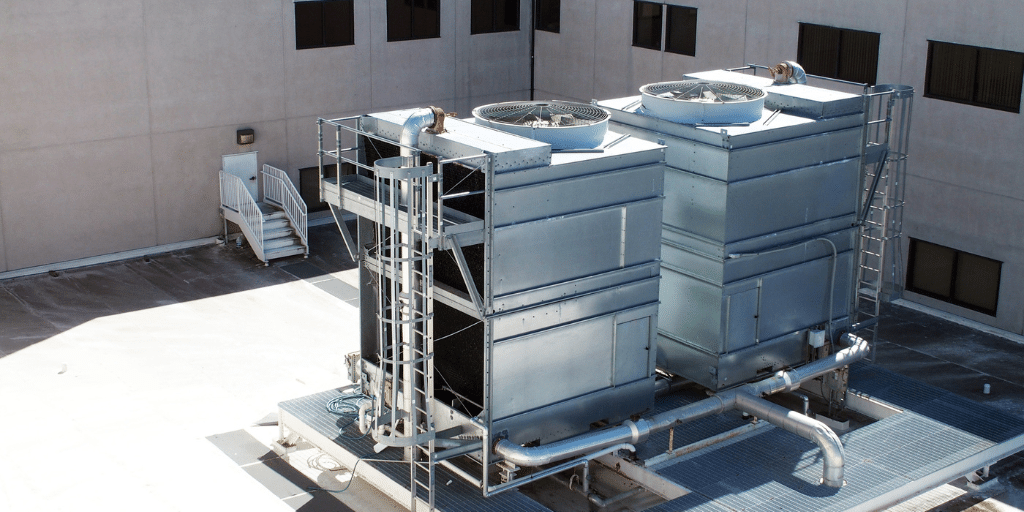Cooling towers are integral in keeping large systems and facilities at optimal temperatures, especially in environments like Los Angeles. These structures extract heat from water and release it into the atmosphere through evaporation, making them an eco-friendly solution for various industries, from power plants to commercial buildings. With various types available—open circuit, closed circuit, and evaporative condensers—cooling towers can meet various cooling requirements. Open circuit towers allow water to directly interact with the air, enhancing evaporation and heat release. In contrast, closed circuits and evaporative condensers are designed for efficiency and reduced water use, catering to different industrial needs.
In Los Angeles, where both temperatures and industrial activities peak, the role of cooling towers becomes even more critical. They align with the city’s push for sustainability and energy efficiency by minimizing water consumption and reducing the reliance on conventional cooling methods. This commitment is mirrored in adopting high-efficiency cooling towers, significantly impacting Los Angeles’s environmental footprint and energy usage. Enhanced with modern technologies like variable frequency drive (VFD) controls, these systems optimize cooling processes, offer substantial energy savings, and ensure that Los Angeles moves toward a sustainable and cooler future.
What is a Cooling Tower?
So, what is a cooling tower? It’s essential in moderating temperatures within large-scale systems by transferring heat from water to the atmosphere through evaporation. These towers are pivotal in industries ranging from power plants to commercial buildings, offering an environmentally friendly option for managing heat. With three main types – open circuit, closed circuit, and evaporative condensers – cooling towers cater to diverse needs. Open circuit towers facilitate direct water exposure to air, maximizing evaporation and heat release. Closed circuits keep the water contained, reducing contamination and conserving water, while evaporative condensers efficiently use refrigerants to enhance energy savings.
In Los Angeles, cooling towers support the city’s vibrant economy and maintain comfortable living and working environments. They align with California’s environmental objectives by limiting water usage and lowering energy consumption. High-efficiency models underscore Los Angeles’s commitment to sustainable development and reducing its carbon footprint. Automated features like VFD controls on fans further boost these systems’ efficiency, demonstrating significant energy savings. This technological advancement, combined with rigorous safety standards and preventive maintenance, ensures that Los Angeles’s cooling towers meet today’s needs and are equipped for a sustainable future.
Types of Cooling Towers: Exploring the Variants
In the realm of cooling technologies, cooling towers stand out for efficiently managing heat exchange across various settings. The three main types, open circuit, closed circuit, and evaporative condensers, offer tailored solutions to distinct cooling challenges. Open circuit towers, for instance, leverage the natural process of evaporation to dissipate heat, making them suitable for large-scale industrial applications where water access is ample. This mode of operation is effective and straightforward, relying on the direct contact between water and air to facilitate cooling.
Conversely, closed-circuit cooling towers, or fluid coolers, introduce an added layer of protection by enclosing the water within pipes, thus preventing contaminants from interfering with the water quality and reducing evaporation losses. This design is particularly advantageous in environments where water conservation is paramount or where there is a high risk of contamination. Evaporative condensers, on the other hand, excel in scenarios requiring refrigerant cooling. They combine the principles of evaporation with a refrigeration cycle to achieve lower temperatures than air-cooled systems can attain, offering significant energy savings and efficiency improvements. This makes them an ideal choice for businesses looking to reduce operational costs while maintaining high performance in their cooling operations.
Benefits of Cooling Towers in Los Angeles
 Cooling towers are indispensable in sustaining Los Angeles’s commercial vitality under the glaring California sun. By efficiently managing the city’s cooling demands, these systems enable businesses to operate smoothly without fearing overheating equipment or uncomfortable working environments. Their ability to significantly reduce water usage is particularly beneficial, reflecting Los Angeles’s commitment to resource conservation and environmental stewardship. This aspect is critical in a region where water scarcity is an ongoing challenge, underscoring the value of technologies that can provide cooling solutions in a water-efficient manner.
Cooling towers are indispensable in sustaining Los Angeles’s commercial vitality under the glaring California sun. By efficiently managing the city’s cooling demands, these systems enable businesses to operate smoothly without fearing overheating equipment or uncomfortable working environments. Their ability to significantly reduce water usage is particularly beneficial, reflecting Los Angeles’s commitment to resource conservation and environmental stewardship. This aspect is critical in a region where water scarcity is an ongoing challenge, underscoring the value of technologies that can provide cooling solutions in a water-efficient manner.
Furthermore, the strategic application of high-efficiency cooling towers, particularly closed-circuit types, heralds a new era of energy conservation in Los Angeles. The California Energy Commission acknowledges that such systems can substantially decrease energy consumption. A study revealed that incorporating these advanced cooling methods could result in a 20% reduction in energy usage for cooling purposes. This statistic highlights the duel benefit of cooling towers: they not only meet the immediate cooling needs of a facility but also contribute to broader energy-saving goals, assisting California in its pursuit of a more sustainable and renewable energy infrastructure.
Additionally, cooling towers contribute to Los Angeles’s urban landscape by reducing the energy demand placed on the city’s power grid, especially during peak summer months. This lessened strain can lead to fewer blackouts and more consistent energy availability for residents and businesses alike. By promoting and adopting these efficient systems, Los Angeles sets a benchmark for how cities can integrate sustainable practices within their industrial and commercial sectors. The cooling towers’ role in this integration is a testament to the forward-thinking approach required to meet modern challenges head-on, ensuring a cooler, greener future for everyone in Los Angeles.
Energy Efficiency: Reducing Consumption and Costs
Cooling towers stand out for their remarkable energy efficiency, a key benefit that attracts many to this cooling solution. By integrating Variable Frequency Drive (VFD) controls, these systems can tailor their output precisely to the current cooling demand. This adaptability optimizes performance and minimizes unnecessary energy consumption, aligning closely with today’s push for sustainable operations.
The positive impact on energy savings from employing VFD controls in cooling towers is significant. Research by the American Society of Heating, Refrigerating, and Air-Conditioning Engineers (ASHRAE) indicates that implementing these controls can lead to an energy usage reduction of about 30% during times of lower demand. Such efficiency not only cuts costs for operators but also contributes to broader environmental conservation efforts by reducing the overall energy footprint of cooling processes.
Safety and Vibration Control
In Los Angeles, where seismic activity is a constant concern, cooling towers are built to meet strict safety and structural requirements. Features such as vibration isolation are critical in these designs, helping to diminish the vibrations generated by the cooling tower fans. This careful attention to detail safeguards the system’s integrity and performance under varying conditions.
Including seismic springs and specially designed supports play a crucial role in maintaining the stability of cooling towers during seismic events. These elements are vital in ensuring that the towers, along with the vital equipment and structures they support, remain secure and functional, even in the face of earthquakes. This dual focus on vibration control and seismic resilience underscores the commitment to safety in designing and installing cooling systems in Los Angeles.
Preventive Maintenance: Ensuring Longevity and Performance
Regular maintenance is the cornerstone of cooling tower longevity and efficiency. By committing to a comprehensive maintenance schedule encompassing water treatment to prevent corrosion and routine checks of all metal components, cooling systems can achieve optimal performance. Taking such preventive measures is crucial for avoiding system parts’ premature wear and tear, which is key to maintaining efficiency over time.
At A/C Control, we pride ourselves on our expertise in cooling tower maintenance and emphasize the importance of this preventative care. We believe that diligent maintenance not only maintains the mechanical integrity of the cooling tower but can also extend its operational lifespan by up to three times. This vivid contrast between well-maintained and neglected systems underscores the importance of regular upkeep in ensuring the health and efficiency of cooling towers.
Economic and Environmental Impact
Cooling towers play a pivotal role in both economic and environmental sustainability. By optimizing water and energy usage, they present a superior alternative to traditional cooling methods. A study from the Environmental Protection Agency (EPA) indicates that high-efficiency cooling towers can decrease water usage by up to 40%, showcasing their contribution to more sustainable urban development practices. This efficiency not only lowers operational costs but also aligns with conservation efforts.
Furthermore, adopting high-efficiency cooling towers in Los Angeles significantly aids in the city’s environmental strategies. These advanced systems are instrumental in slashing greenhouse gas emissions, with potential reductions of up to 25% in energy consumption for cooling, as per findings by the California Energy Commission. This shift supports Los Angeles’s green initiatives and sets a standard for environmentally responsible cooling solutions in urban settings.
The Role of A/C Control in Upgrading Your Cooling System
A/C Control is a leader in upgrading cooling systems to high-efficiency models in Los Angeles, prioritizing safety, integrity, and unmatched professional expertise. Our certified technicians are dedicated to delivering installations that go beyond the expected industry standards, ensuring every project reflects our commitment to excellence.
Opting for A/C Control for your cooling tower needs means choosing a partnership that values reliability and efficiency. Our approach centers on creating systems that excel in performance while contributing positively to environmental sustainability. With A/C Control, you’re not just updating your cooling system; you’re making a smart investment in the future of your property.
Towards a Cooler Future
Cooling towers emerge as unsung heroes in the architectural and industrial landscapes of Los Angeles, underpinning the city’s capability to thrive in the face of escalating temperatures. These systems, by efficiently transferring heat through water evaporation, embody an advanced approach to managing large-scale cooling needs. Their versatility and adaptability across various industries—from towering power plants to sprawling commercial complexes—highlight their critical role in fostering a sustainable, energy-efficient future. In essence, cooling towers enhance operational efficiencies and align with Los Angeles’s broader environmental ambitions by conserving water and reducing energy consumption.
Los Angeles’s commitment to sustainable development and carbon footprint reduction finds a strong ally in the technology of cooling towers. High-efficiency models, powered by innovations such as VFD controls, stand at the forefront of this endeavor, showcasing potential for significant energy savings. This blend of operational necessity and environmental stewardship underscores the city’s forward-thinking ethos. As Los Angeles navigates towards greener horizons, cooling towers will undoubtedly continue to play a pivotal role, ensuring that the city’s economy and its environments remain vibrant and viable for future generations.







